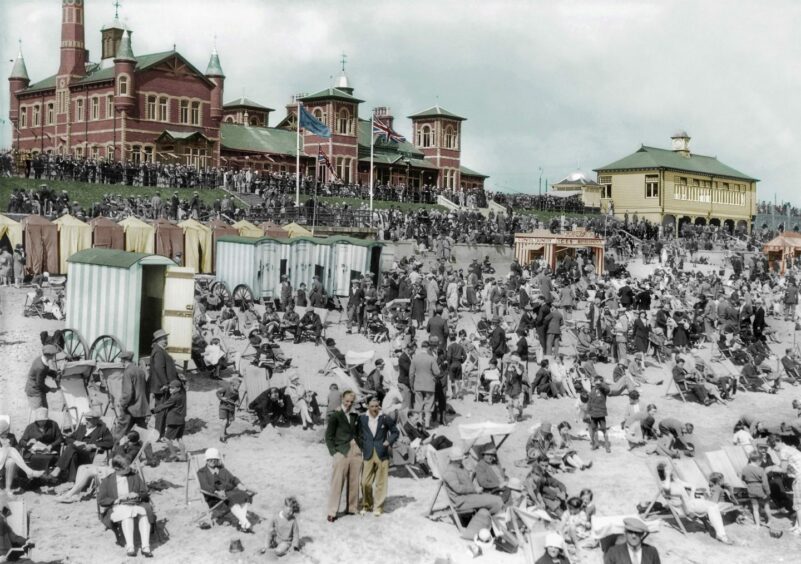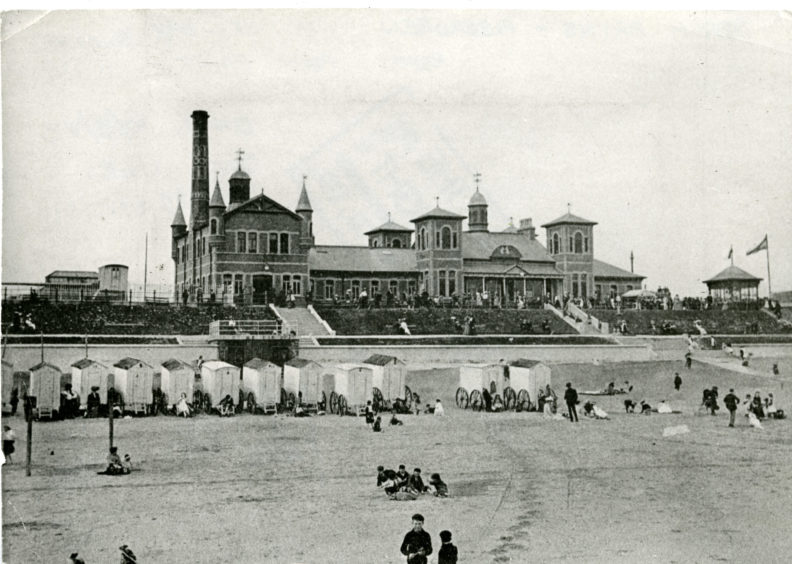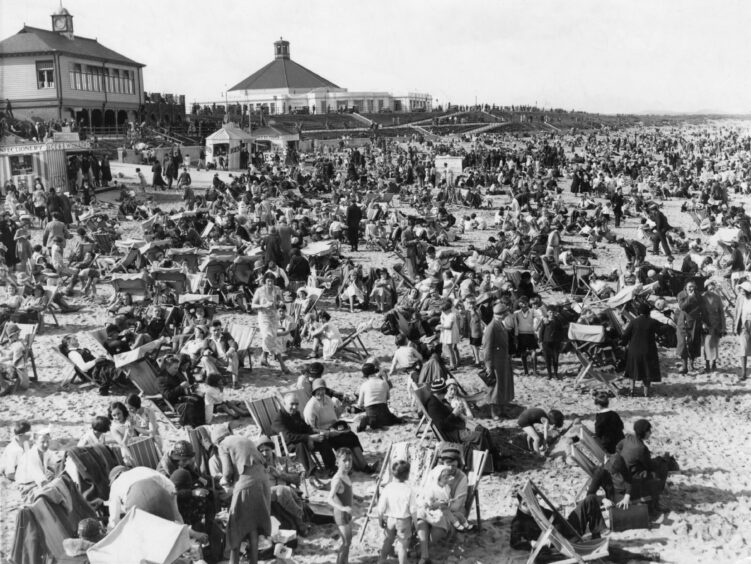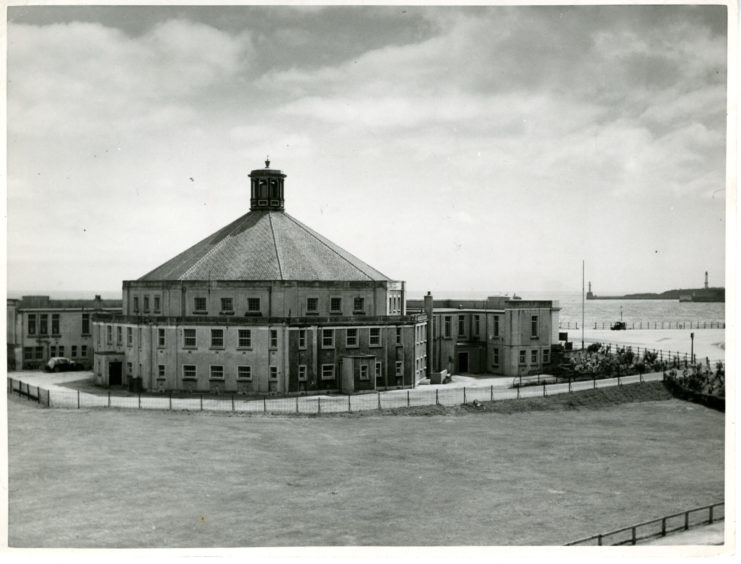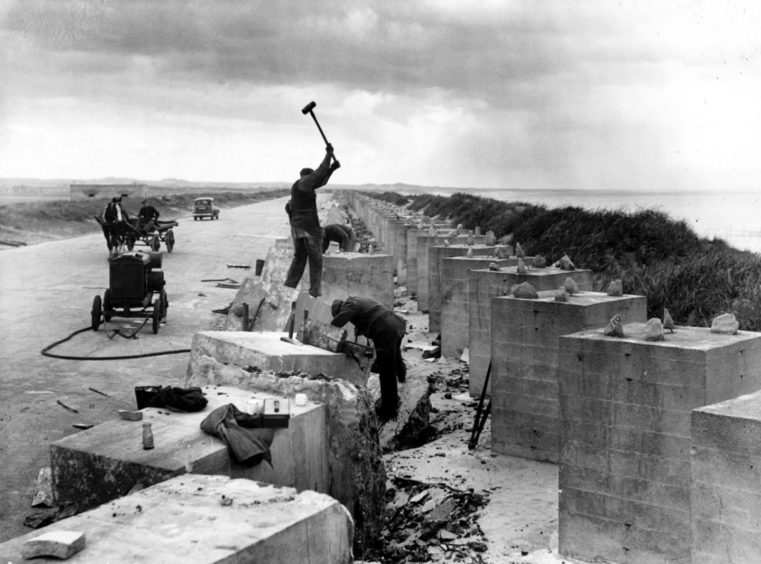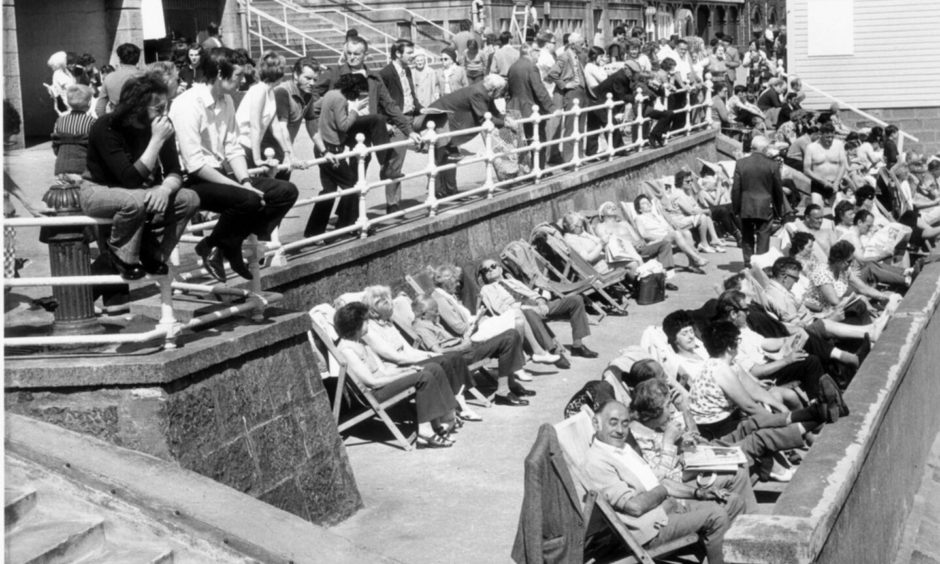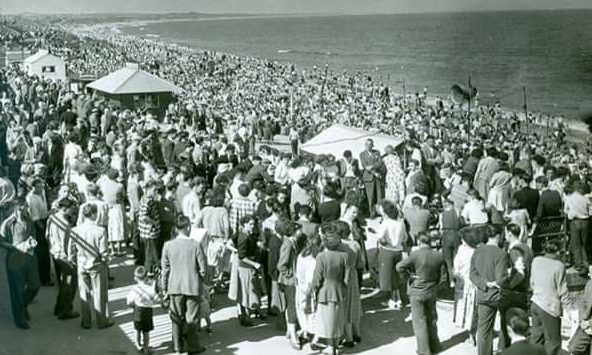
If you had ventured down to the Golden Sands of the Silver City a century ago, you would have found a scene very different from the Aberdeen Beach of today.
The first thing to strike you would be the sheer number of people, flocking to take in the sea air. The second thing would be what they were wearing.
Forget swimsuits and shorts. Shirts and ties, hats and long dresses would have been beachwear fashion of the day.
It’s just a snapshot in time of the history of the beach as a place of leisure and relaxation for the people of the city.
It’s a story which Alan Johnstone tells as part of his volunteer role with a number of local organisations around the subjects of local history and memories, including Aberdeen Art Gallery and Museums and Alzheimer Scotland.
And he has fascinating facts and insights to offer, ranging from a forgotten switchback railway to a lost theatre – and the small matter of the looming beach gas works and chemical factory.
The birth of the beach as Aberdeen’s playground began as the 19th century faded into the 20th, said Mr Johnstone.
“As you move from Victorian times into Edwardian times there are images of the very old-fashioned beach huts. They were for privacy, but back in the very early days the better off people had their beach hut taken down to the edge of the water, either manually or in some cases by using horses.
“Then they could come out of their beach hut, have a wee paddle with nobody looking, then go back in. They didn’t want to be seen with any flesh showing.”
However, this was a time when the staid and repressive values of Victorian society eased and people were finding new freedoms and looking for more entertainment.
Paddling in the water – even though it was the North Sea – gave you a feeling of wellbeing’
Alan Johnstone
It was a booming new era for Aberdeen, with a harbour expansion, the opening of His Majesty’s and an air of prosperity and hope for the future.
This was also the era when trams were coming into being, making it easier for people to move around on public transport, including getting to the beach.
“There was the concept that fresh air and being by the seaside makes you feel good,” said Mr Johnstone.
“Paddling in the water – even though it was the North Sea – gave you a feeling of wellbeing,”
As the 1920s rolled into the 1930s, the fashion for health and fitness and embracing the great outdoors took off. Sea air, in particular, was supposed to be good for the constitution and the well-balanced mind. It was the era of “keep young and beautiful”.
But that didn’t mean there was any great rush to loosen the ties or stays of those flocking to the sands.
“What strikes me about the older pictures, in fact right through to the 50s and 60s, a lot of people went to the beach, but didn’t go to sunbathe as we know it,” said Mr Johnstone.
“They would maybe put a towel on the beach or, later on, have a deck chair, but they would still be fully clothed. The men might be wearing suits and ties and the ladies in their dresses with their hats on. It wasn’t sunbathing as we know it nowadays. It was more to enjoy the outdoors.”
And if they wanted to take to the waters, there was always the Beach Bathing Station to turn to.
The Baths
It stood at the end of the Beach Boulevard, as it is nowadays, and was opened in 1896, known to generations as the Beach Baths.
“Originally members of the public would go down there to wash and bathe as an alternative to having a tin bath in front of the fire,” said Mr Johnstone. “It became so popular they went on to install a pool, water chutes, Turkish baths. It went from being purely a bathing station to a pool as we would know it nowadays.”
The Beach Baths survived until 1972, fading in popularity as more and more people used the “Uptown Baths” on Justice Mill Lane.
Mr Johnstone believes that as society came out of the First World War and the idea of travel by train between cities soared, Aberdeen Beach really started to take off.
“You might have the Glasgow Fair, for example. Everybody would come up from Glasgow. I have read newspaper reports that every room in the city was booked. The place was just heaving between the wars,” he said.
“It was a bit like coming out of Victorian times, more freedoms, celebration and the ability to travel within Scotland.”
This was also the era when fresh air and beaches weren’t enough on their own. People needed to be entertained as they flocked to Aberdeen Beach.
“You can tie that in with the Beach Ballroom and the Pavilion Theatre. This was when they opened and grew in popularity,” said Mr Johnstone.
“The council decided to build the Beach Ballroom in 1919 and the idea was to have a concert hall, restaurant and dance hall as we know it, but also to have two shopping arcades. It was very much a big entertainment complex, but the shops never opened of course. The rest of it did in 1929.
“The ballroom was used during the afternoon so people could go for a posh afternoon tea with the dainty cakes and cake stands, with dances in the evening. That was the first example of real entertainment at the beach. The Beach Ballroom was described in a poster as ‘Scotland’s finest social… dancing, afternoon and evening’.”
The Pavilion Theatre stood near the Broad Hill and was opened in 1928.
“It was music hall type entertainment, but a lot of it was done on a platform open to the air,” said Mr Johnstone. “As time went by, they made it a proper theatre, all indoors.”
Harry Gordon, one of the top Scottish entertainers of the era, was very much associated with the Pavilion, taking over as master of ceremonies.
“Eventually he went on to buy the theatre,” said Mr Johnstone. “In a picture from the time you can see the roof of the theatre and it actually says ‘Harry Gordon’s Entertainers’.”
The theatre eventually became the Gaiety Restaurant in 1961, as times were changing. It went on to become Jimmy Chung’s restaurant, which went up in flames in a spectacular blaze in February 2014.
The lost buildings of Aberdeen beach boulevard
Another lost attraction at the beach was its switchback railway.
“It was a roller-coaster in a way,” said Mr Johnstone. “People went around the rails, going up and down. It was actually bought from Great Yarmouth and brought up here in 1929. People just enjoyed a ride, with the brakeman standing in the middle of a carriage making sure it stopped and started when it was supposed to.
“It burnt down in 1943. Everywhere I look it says it was a ‘mysterious fire’.”
Another vanished feature from the beach, might not have been as welcome as the four-minute hurl on the railway. A gas works and chemical factory loomed over the road between what is now Queen’s Links and Fittie. Both dated back to the mid 1800s, preceding the idea of the beach as a place for leisure and pleasure.
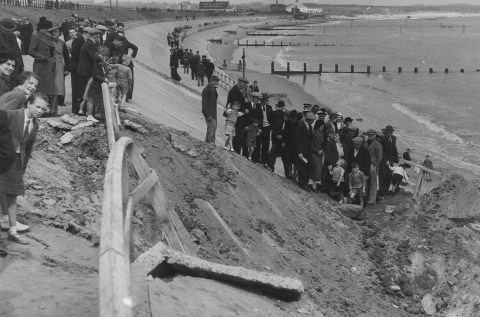
“The thing a lot of Aberdonians will remember is the harbour railway,” said Mr Johnstone. “Coal was coming off the ships at the harbour, then taken along to the gas works, along Waterloo Quay then up towards Cotton Street. Aberdonians of that age will remember very well the railway engine.
“Another thing was the smell. The chemical works were owned by Mr John Miller & Co. They were locally known as ‘Stinky Miller’s’.”
The chemical plant vanished in the 60s, but the gasworks lasted until 1979.
The dark days of the Second World War saw the beach not as a place to enjoy, but a front to defend from the threat of Nazi attack. Anti-tank cubes, pill boxes and miles of barbed wired and fences turned the beach into the frontline of Fortress Britain.
But in the post-war years, Aberdeen Beach burst back into life.
It wasn’t just as active as before, it was even busier with the big boom of the 50s and 60s.
“If you look at the photos, there was no room to move on the beach.”
From the late 40s through to the late 60s and early 70s, Aberdeen Beach was a major tourist destination for the whole of Scotland – and rail was king. Railway posters of the day promoted the Golden Sands of the Silver City as a must-visit destination.
“When you look at the 50s and 60s and you see the beaches absolutely packed, trams and buses were running non-stop right through the day,” said Mr Johnstone.
“They were running trams every couple of minutes, all jam-packed.”
That was when people realised Aberdeen Beach wasn’t that warm”
Alan Johnstone
The huge popularity could be seen in the winding queues for people trying to get a deck chair.
“There were really long queues as you can see in photos from the day. If you look closely at the photos, some of the children have their swimming costumes on, but the adults are fully-clothed.
“In one picture, the gentleman at the front of the queue has a suit and tie on. That comes back to the point the adults weren’t using the beach as we know it. They were just enjoying the outdoors.”
The idea of a packed and busy beach summons up images of endless hot summers of decades ago. Or were they?
“We often talk about that in memory sessions,” said Mr Johnstone. “But I don’t think it was. I think there was just no alternative. I think it is just a perception it must have been warmer, but there was nothing else to do.”
Then came package holidays in the 1970s transporting people to the warmer and exotic climes overseas… the promise of not just sandy beaches, but hot sunshine to go with it.
“That was when people realised Aberdeen Beach wasn’t that warm,” said Mr Johnstone, laughing. “But then the adults could also enjoy the sun and forget about wearing a suit or a long dress.”
As the tourism trade shrank for Aberdeen, so too did its beach.
“If you look at the area of sand, the beach used to be a lot bigger than it is nowadays,” said Mr Johnstone. “People could walk quite a considerable distance before they hit the water. Now, with coastal erosion and the way the currents are moving, the beach is a lot shorter than it used to be.”
Today, tourists and visitors might not be playing sardines on the sands of the beach, but it is still a much-loved part of Aberdeen. It is one that should be cherished, said Mr Johnstone.
“I don’t think we will tempt people back to sunbathe. Package holidays and other attractions have done it,” said Mr Johnstone. “But rather than spend your holiday at the beach, you can enjoy a day at the beach, stretch your legs and enjoy the views and the walk.”
